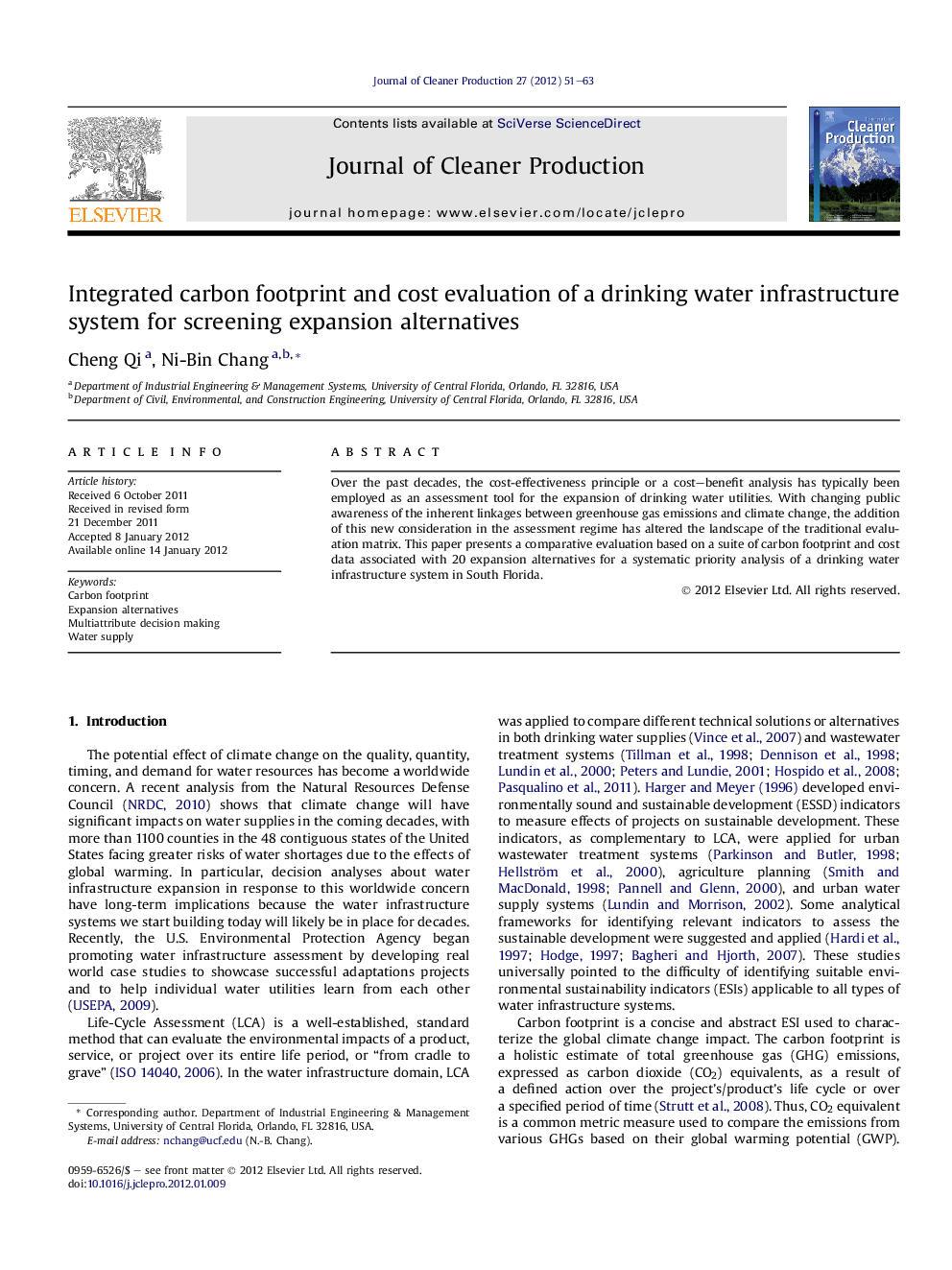| Article ID | Journal | Published Year | Pages | File Type |
|---|---|---|---|---|
| 8108388 | Journal of Cleaner Production | 2012 | 13 Pages |
Abstract
Over the past decades, the cost-effectiveness principle or a cost-benefit analysis has typically been employed as an assessment tool for the expansion of drinking water utilities. With changing public awareness of the inherent linkages between greenhouse gas emissions and climate change, the addition of this new consideration in the assessment regime has altered the landscape of the traditional evaluation matrix. This paper presents a comparative evaluation based on a suite of carbon footprint and cost data associated with 20 expansion alternatives for a systematic priority analysis of a drinking water infrastructure system in South Florida.
Related Topics
Physical Sciences and Engineering
Energy
Renewable Energy, Sustainability and the Environment
Authors
Cheng Qi, Ni-Bin Chang,
